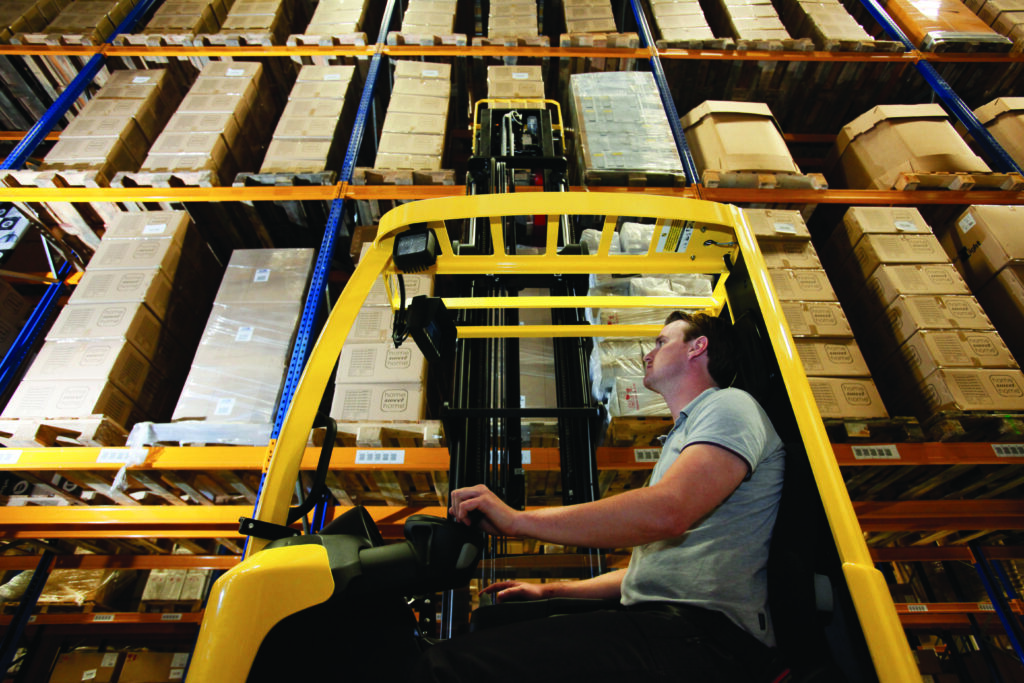4 Factors Driving Change In Industrial Manufacturing
30th April 2024

Robert O’Donoghue from Hyster Europe reveals the key trends and challenges affecting industrial manufacturing warehouse operations and discusses how Hyster® materials handling equipment is responding to changing requirements.
1. Labour market challenges
Shortages of warehouse staff and lift truck operators remain widespread. In addition, many industrial employers are experiencing a high staff turnover in certain areas of their operation, such as order picking. An important consideration with a stretched workforce is the individual operator’s needs. Warehouse equipment should be designed for operator comfort to help deliver the best productivity levels. However, ergonomic design and operator assist features can also play an important role in keeping equipment operators motivated and content, which may help support better staff retention.
In situations with a high staff turnover, it is also important that warehouse equipment, such as order pickers, stackers, and pallet trucks, are simple to use and easy to get started with after training.
These factors have been accounted for across the range of Hyster warehouse equipment. For instance, the Hyster S2.0SD Platform Double Stacker is built with an operator centric design that features a large platform with rubber floormat to provide excellent grip and side/rear operator compartment panels. Additional options to enhance the operator experience include multipurpose bars and clamps, clipboard, and a bottle holder.
2. Booming Demand
Property costs and rental rates have increased, making the price of warehouse floorspace more costly per square metre. At the same time, industrial manufacturers need to adapt to seasonal and cyclical fluctuations in demand for their products. Warehouses are increasingly storing more product lines. Loads need to be handled with high precision for maximum efficiency, and to avoid damage. Traceability is important, so more warehouses are adopting management software and devices, like barcode scanners, to promote high accuracy, and, in turn, customer satisfaction.
However, more stock means that more room is needed. To increase pallet spaces on the same footprint, some Hyster customers have been raising racking heights in the warehouse. In response to this, the Hyster R1.4-2.5 Reach Truck series was updated to incorporate a 14-metre mast for the R2.0HD model as a standard option.
Some industrial manufacturing applications are also now storing items outdoors to maximise use of their space. These businesses need trucks that can be used both inside and outside to optimise their fleets, and costs. The robust new Hyster RO1.6-2.0 Reach Truck models, for lifts up to two tonnes, are designed to work outdoors, as well as in indoor warehouses. They feature Super Elastic Tyres for load and drive wheels that suit conditions in an outdoor storage yard, plus heating and wiper options, allow the truck to be tailored for outdoor use as needed.
3. Environmental awareness
An increased focus on environmental and sustainability objectives is resulting in some businesses considering their power options for materials handling equipment more closely. Lithium-ion batteries are often a popular choice for these operations. The latest lines of Hyster warehouse equipment respond to this with lithium-ion battery options. For instance, when specified with a lithium-ion battery, the new Hyster Outdoor Reach Truck requires no off-gassing or watering and there is no risk of acid spills. Lithium-ion batteries may also drive high productivity. They enable rapid opportunity charging during breaks, with no adverse effect on the battery, to support multi-shift operations and maximise fleet uptime.
Transitioning to lithium-ion needs to be quick and easy. The Hyster S2.0D Platform Double Stacker, for example, is designed to be ‘lithium-ion ready’, with a controller that automatically recognises the chemistry of the battery (lithium-ion vs. lead-acid). This means there is no need to manually change any parameters to manage the battery. The best power option will always depend on the particular application’s needs.
4. The growth of automation
Some businesses are exploring opportunities for automation to help fill the gaps in their talent pool. At the same time, technology is often becoming more accessible and affordable.
Robotic warehouse equipment and lift trucks may help companies to optimise their workforce, automating repetitive tasks and allocating human resource to more value-added activities.
Hyster Robotics can help. The solution enables Hyster Robotic lift trucks and warehouse equipment to be used by human operators if needed and does not require extensive changes to warehouse infrastructure. Therefore, if the warehouse needs to change or expand, the robotic equipment can be adapted without the whole automation project having to start from scratch.
read more
Hyster Launches 7-9T Range With Fully-Integrated Lithium-ion

